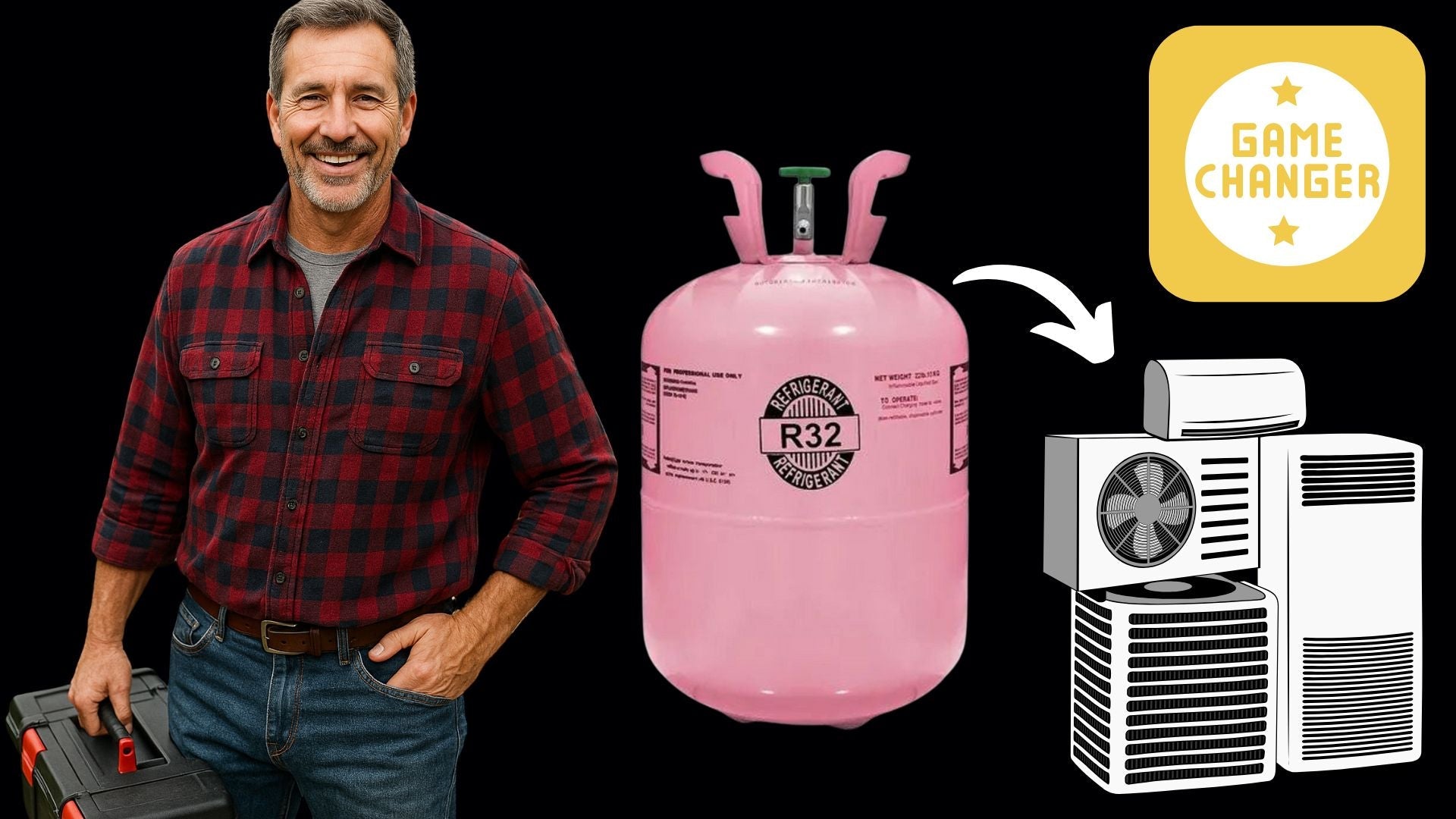Howdy—it’s Mike again.
There’s been a lot of talk in the industry about refrigerants lately, and for good reason. The stuff flowing through your AC’s coils isn’t just technical—it directly affects how efficient, affordable, and environmentally friendly your HVAC system really is.
And the refrigerant that’s rising to the top?
R-32.
If you’re thinking about upgrading your HVAC system, R-32 isn’t just a buzzword—it’s a smart investment. Let me show you why.
What Is R-32 Refrigerant?
R-32 (difluoromethane) is a next-gen refrigerant used in air conditioning systems. It’s part of the A2L category, which means it’s mildly flammable—but also significantly more eco-friendly than what came before it.
Here’s how it stacks up:
| Property | R-410A | R-32 |
|---|---|---|
| Global Warming Potential (GWP) | 2,088 | 675 |
| Ozone Depletion Potential | 0 | 0 |
| Efficiency | Standard | ~10% more efficient |
| Flammability | A1 (non-flammable) | A2L (mildly flammable) |
Why R-32 Is Better Than R-410A (The Old Industry Standard)
R-410A has been the go-to refrigerant since the 1990s, but it's getting phased out due to its high GWP. Here's why R-32 is taking its place:
1. Higher Efficiency
R-32 transfers heat more effectively than R-410A, which means:
-
Shorter compressor run times
-
Lower energy bills
-
Less wear and tear on the unit
That’s money saved every month.
2. Lower Environmental Impact
A GWP of 675 vs. R-410A’s 2,088? That’s a 68% reduction in environmental impact. It’s the kind of future-focused step that gets my thumbs-up.
3. Simpler to Handle and Recharge
R-32 is a single-component refrigerant, while R-410A is a blend. That means:
-
Easier to recycle and reuse
-
No need to perfectly match blend ratios when charging
-
Fewer complications during servicing
Is R-32 Safe for Home Use?
Yep—when installed and handled properly, absolutely.
It’s true that R-32 is classified as mildly flammable. But modern HVAC systems are built to contain and control refrigerants safely. Plus, R-32 systems undergo rigorous third-party testing and meet all U.S. safety standards.
In fact, ASHRAE and AHRI both support the safe residential use of A2L refrigerants like R-32.
Just be sure your installation is done by a pro who’s certified to handle A2L refrigerants. (At The Furnace Outlet, we only sell systems backed by trusted manufacturers like Goodman who already account for R-32 safety in their engineering.)
Why Homeowners Should Care
You may be thinking: “Okay, Mike… but I just want to stay cool in the summer and warm in the winter.”
I hear you. But here’s what R-32 means in plain terms:
-
You’ll spend less on your utility bills
-
You’ll get more life out of your system
-
You’ll be ready for stricter regulations down the road
-
You won’t get stuck with hard-to-find refrigerants or parts
And that last one? That’s huge.
Just like R-22 disappeared years ago, R-410A is next on the chopping block. If your system needs a recharge in a few years, it’ll be pricey—and maybe even impossible. R-32 is the smart move now.
My Recommendation: Go With a Matched R-32 System
If you’re shopping around, don’t just replace a broken component—upgrade to a full system that’s designed to work together.
Check out the R-32 AC and Gas Furnace systems at The Furnace Outlet. These matched units give you:
-
SEER2 ratings of 15.2 and up
-
96% AFUE gas furnaces
-
Advanced coils designed for R-32
-
Lower installation and lifetime costs
And of course, they’re backed by strong warranties and built to meet U.S. safety codes.
Final Thoughts: R-32 Isn’t the Future—It’s the Present
If you’re replacing an old unit, don’t saddle yourself with yesterday’s refrigerant. R-32 systems are available now—and they’re better for your home, your wallet, and the environment.
And as always, if you’ve got questions about upgrading your system the right way, drop me a line.
Catch you next time,
– Mike







